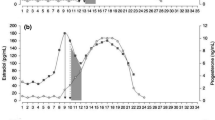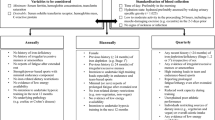Abstract
Female astronauts have been reported to have a higher incidence of post-flight orthostatic intolerance (POI) compared with that of their male counterparts. POI may result from increased permeability of the endothelial cell (EC) layer in the vasculature. The goal of this study has been to determine whether estradiol (E2) and dihydrotesterone (DHT) alter human umbilical vein ECs (HUVECs) responses to short term (10 min) hypergravity (1–3 g) mimicking the g force experienced by astronauts during liftoff. E2 and DHT rapidly (within 5 min) activated MAPK (mitogen-activated protein kinase) in HUVEC at 1 g in a receptor-dependent manner. Liftoff inhibited MAPK phosphorylation, and rapid E2 and DHT activation of MAPK was blocked. Liftoff simulation or brief (5–90 min) treatment with E2 or DHT at 1 g had no effect on the expression of the EC tight-junction protein occludin. However, 24-h pre-treatment of HUVECs with E2 and DHT prior to liftoff simulation significantly increased occludin expression, and hypergravity exposure did not alter this increase. These data provide evidence for a possible protective effect of E2 and DHT on EC function as indicated by increased occludin; this may help maintain the integrity of EC tight junction and could thus retard or reduce the incidence of POI.











Similar content being viewed by others
References
Armen TA, Gay CV (2000) Simultaneous detection and functional response of testosterone and estradiol receptors in osteoblast plasma membranes. J Cell Biochem 79:620–627
Chambliss KL, Shaul PW (2002) Estrogen modulation of endothelial nitric oxide synthase. Endocr Rev 23:665–686
Cho MM, Ziats NP, Abdul–Karim FW, Pal D, Goldfarb J, Utian WH, Gorodeski GI (1998) Effects of estrogen on tight junctional resistance in cultured human umbilical vein endothelial cells. J Soc Gynecol Invest 5:260–270
Chung NP, Cheng CY (2001) Is cadmium chloride-induced inter-Sertoli tight junction permeability barrier disruption a suitable in vitro model to study the events of junction disassembly during spermatogenesis in the rat testis? Endocrinology 142:1878–1888
Convertino VA (1999) G-factor as a tool in basic research: mechanisms of orthostatic tolerance. J Gravit Physiol 6:P73–76
Drummer C, Norsk P, Heer M (2001) Water and sodium balance in space. Am J Kidney Dis 38:684–690
Farshori P, Kachar B (1999) Redistribution and phosphorylation of occludin during opening and resealing of tight junctions in cultured epithelial cells. J Membr Biol 170:147–156
Furuse M, Hirase T, Itoh M, Nagafuchi A, Yonemura S, Tsukita S (1993) Occludin: a novel integral membrane protein localizing at tight junctions. J Cell Biol 123:1777–1788
Gebken J, Luders B, Notbohm H, Klein HH, Brinckmann J, Muller PK, Batge B (1999) Hypergravity stimulates collagen synthesis in human osteoblast-like cells: evidence for the involvement of p44/42 MAP-kinases (ERK 1/2). J Biochem (Tokyo) 126:676–682
Gye MC, Ohsako S (2003) Effects of flutamide in the rat testis on the expression of occludin, an integral member of the tight junctions. Toxicol Lett 143:217–222
Hirase T, Staddon JM, Saitou M, Ando-Akatsuka Y, Itoh M, Furuse M, Fujimoto K, Tsukita S, Rubin LL (1997) Occludin as a possible determinant of tight junction permeability in endothelial cells. J Cell Sci 110:1603–1613
Hisamoto K, Ohmichi M, Kanda Y, Adachi K, Nishio Y, Hayakawa J, Mabuchi S, Takahashi K, Tasaka K, Miyamoto Y, Taniguchi N, Murata Y (2001a) Induction of endothelial nitric-oxide synthase phosphorylation by the raloxifene analog LY117018 is differentially mediated by Akt and extracellular signal-regulated protein kinase in vascular endothelial cells. J Biol Chem 276:47642–47649
Hisamoto K, Ohmichi M, Kurachi H, Hayakawa J, Kanda Y, Nishio Y, Adachi K, Tasaka K, Miyoshi E, Fujiwara N, Taniguchi N, Murata Y (2001b) Estrogen induces the Akt-dependent activation of endothelial nitric-oxide synthase in vascular endothelial cells. J Biol Chem 276:3459–3467
Hussein–Fikret S, Fuller PJ (2005) Expression of nuclear receptor coregulators in ovarian stromal and epithelial tumours. Mol Cell Endocrinol 229:149–160
Kampa M, Nifli AP, Charalampopoulos I, Alexaki VI, Theodoropoulos PA, Stathopoulos EN, Gravanis A, Castanas E (2005) Opposing effects of estradiol- and testosterone-membrane binding sites on T47D breast cancer cell apoptosis. Exp Cell Res 307:41–51
Kevil CG, Okayama N, Trocha SD, Kalogeris TJ, Coe LL, Specian RD, Davis CP, Alexander JS (1998) Expression of zonula occludens and adherens junctional proteins in human venous and arterial endothelial cells: role of occludin in endothelial solute barriers. Microcirculation 5:197–210
Kevil CG, Oshima T, Alexander B, Coe LL, Alexander JS (2000) H2O2-mediated permeability: role of MAPK and occludin. Am J Physiol Cell Physiol 279:C21–C30
Kirby JE (2004) Anthrax lethal toxin induces human endothelial cell apoptosis. Infect Immun 72:430–439
Klinge CM, Blankenship KA, Risinger KE, Bhatnagar S, Noisin EL, Sumanasekera WK, Zhao L, Brey DM, Keynton RS (2005) Resveratrol and estradiol rapidly activate MAPK signaling through estrogen receptors alpha and beta in endothelial cells. J Biol Chem 280:7460–7468
Kousteni S, Bellido T, Plotkin LI, O’Brien CA, Bodenner DL, Han L, Han K, DiGregorio GB, Katzenellenbogen JA, Katzenellenbogen BS, Roberson PK, Weinstein RS, Jilka RL, Manolagas SC (2001) Nongenotropic, sex-nonspecific signaling through the estrogen or androgen receptors: dissociation from transcriptional activity. Cell 104:719–730
Leach CS, Alfrey CP, Suki WN, Leonard JI, Rambaut PC, Inners LD, Smith SM, Lane HW, Krauhs JM (1996) Regulation of body fluid compartments during short-term spaceflight. J Appl Physiol 81:105–116
Levin ER (2002) Cellular functions of plasma membrane estrogen receptors. Steroids 67:471–475
Lutz LB, Jamnongjit M, Yang WH, Jahani D, Gill A, Hammes SR (2003) Selective modulation of genomic and nongenomic androgen responses by androgen receptor ligands. Mol Endocrinol 17:1106–1116
Midwinter RG, Vissers MC, Winterbourn CC (2001) Hypochlorous acid stimulation of the mitogen-activated protein kinase pathway enhances cell survival. Arch Biochem Biophys 394:13–20
Miyamoto H, Yeh S, Wilding G, Chang C (1998) Promotion of agonist activity of antiandrogens by the androgen receptor coactivator, ARA70, in human prostate cancer DU145 cells. Proc Natl Acad Sci USA 95:7379–7384
Muller M, Schouw YT van der, Thijssen JH, Grobbee DE (2003) Endogenous sex hormones and cardiovascular disease in men. J Clin Endocrinol Metab 88:5076–5086
Muller M, Beld AW van den, Bots ML, Grobbee DE, Lamberts SW, Schouw YT van der (2004) Endogenous sex hormones and progression of carotid atherosclerosis in elderly men. Circulation 109:2074–2079
Ojanotko–Harri A, Forssell H, Laine M, Hurttia H, Blauer M, Tuohimaa P (1992) Immunohistochemical detection of androgen receptors in human oral mucosa. Arch Oral Biol 37:511–514
Razandi M, Oh P, Pedram A, Schnitzer J, Levin ER (2002) ERs associate with and regulate the production of caveolin: implications for signaling and cellular actions. Mol Endocrinol 16:100–115
Razandi M, Pedram A, Park ST, Levin ER (2003) Proximal events in signaling by plasma membrane estrogen receptors. J Biol Chem 278:2701–2712
Razandi M, Pedram A, Merchenthaler I, Greene GL, Levin ER (2004) Plasma membrane estrogen receptors exist and functions as dimers. Mol Endocrinol 18:2854–2865
Rubio–Gayosso I, Garcia–Ramirez O, Gutierrez–Serdan R, Guevara–Balcazar G, Munoz–Garcia O, Morato–Cartajena T, Zamora–Garza M, Ceballos–Reyes G (2002) Testosterone inhibits bradykinin-induced intracellular calcium kinetics in rat aortic endothelial cells in culture. Steroids 67:393–397
Sakakibara A, Furuse M, Saitou M, Ando-Akatsuka Y, Tsukita S (1997) Possible involvement of phosphorylation of occludin in tight junction formation. J Cell Biol 137:1393–1401
Schnittler HJ (1998) Structural and functional aspects of intercellular junctions in vascular endothelium. Basic Res Cardiol 93 Suppl 3:30–39
Sierra–Ramirez A, Morato T, Campos R, Rubio I, Calzada C, Mendez E, Ceballos G (2004) Acute effects of testosterone on intracellular Ca2+ kinetics in rat coronary endothelial cells are exerted via aromatization to estrogens. Am J Physiol Heart Circ Physiol 287:H63–H71
Somjen D, Kohen F, Gayer B, Kulik T, Knoll E, Stern N (2004) Role of putative membrane receptors in the effect of androgens on human vascular cell growth. J Endocrinol 180:97–106
Spisni E, Bianco MC, Griffoni C, Toni M, D’Angelo R, Santi S, Riccio M, Tomasi V (2003) Mechanosensing role of caveolae and caveolar constituents in human endothelial cells. J Cell Physiol 197:198–204
Unni E, Sun S, Nan B, McPhaul MJ, Cheskis B, Mancini MA, Marcelli M (2004) Changes in androgen receptor nongenotropic signaling correlate with transition of LNCaP cells to androgen independence. Cancer Res 64:7156–7168
Wang Y, Zhang J, Yi XJ, Yu FS (2004) Activation of ERK1/2 MAP kinase pathway induces tight junction disruption in human corneal epithelial cells. Exp Eye Res 78:125–136
Waters WW, Ziegler MG, Meck JV (2002) Postspaceflight orthostatic hypotension occurs mostly in women and is predicted by low vascular resistance. J Appl Physiol 92:586–594
Ye L, Martin TA, Parr C, Harrison GM, Mansel RE, Jiang WG (2003) Biphasic effects of 17-beta-estradiol on expression of occludin and transendothelial resistance and paracellular permeability in human vascular endothelial cells. J Cell Physiol 196:362–369
Zeng R, Li X, Gorodeski GI (2004) Estrogen abrogates transcervical tight junctional resistance by acceleration of occludin modulation. J Clin Endocrinol Metab 89:5145–5155
Acknowledgements
We thank Darren M. Brey for performing some of the initial experiments in this project. We thank AstraZeneca for providing bicalutamide (Casodex) for our study.
Author information
Authors and Affiliations
Corresponding author
Additional information
This work was supported by NASA grant NAG5-12874 to C.M.K. and R.S.K. and by American Heart Association Ohio Valley Affiliate grant 0555270B to C.M.K. The American Heart Association Ohio Valley supported W.K.S. with an affiliate post-doctoral fellowship (0425431B).
Rights and permissions
About this article
Cite this article
Sumanasekera, W.K., Zhao, L., Ivanova, M. et al. Effect of estradiol and dihydrotestosterone on hypergravity-induced MAPK signaling and occludin expression in human umbilical vein endothelial cells. Cell Tissue Res 324, 243–253 (2006). https://doi.org/10.1007/s00441-005-0113-0
Received:
Accepted:
Published:
Issue Date:
DOI: https://doi.org/10.1007/s00441-005-0113-0




